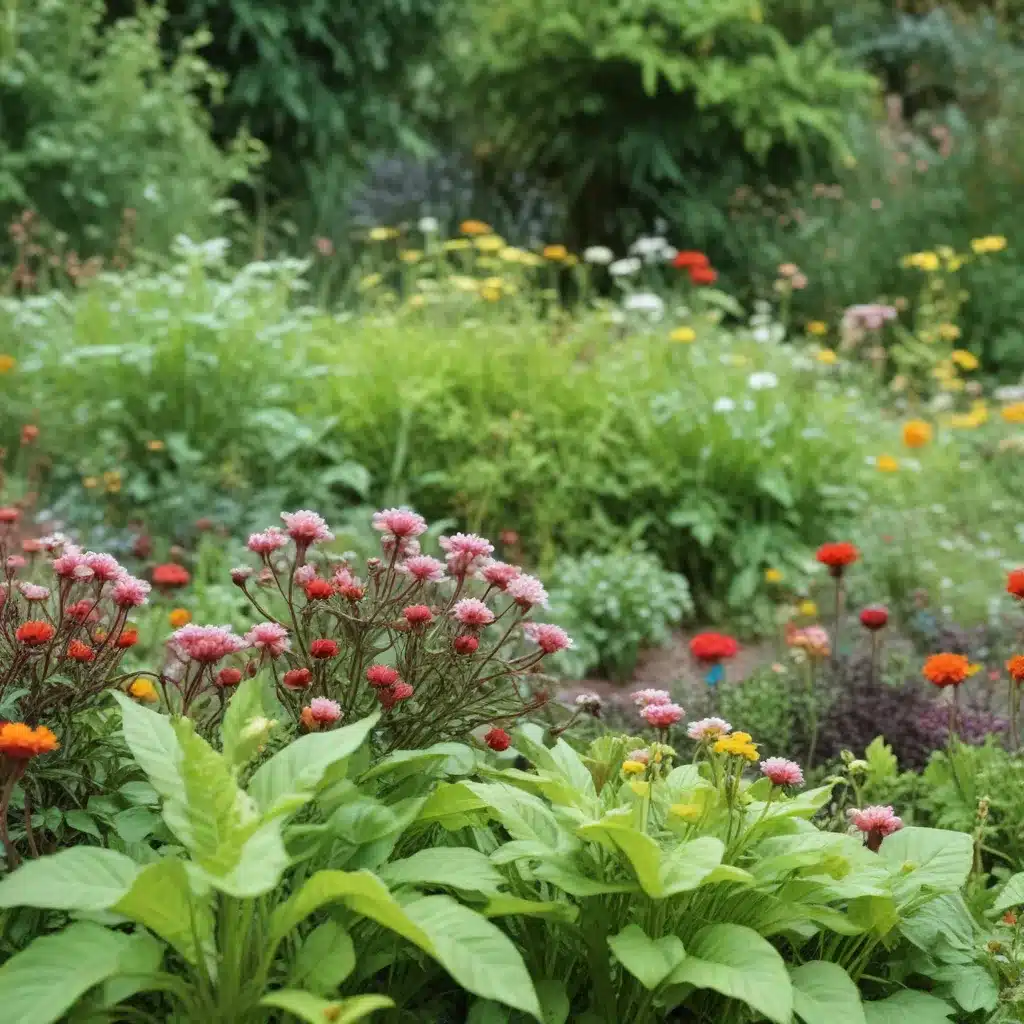
Gardening is a wonderfully rewarding endeavor, allowing us to reconnect with nature, grow fresh and nutritious foods, and even teach our children valuable lessons about the natural world. However, the age-old challenge of controlling pests can often put a damper on the gardening experience. As an organic farm educator at Crooked Pines Farm, I’ve learned that the key to success lies in adopting an integrated pest management (IPM) approach – one that relies on a diverse toolkit of eco-friendly strategies rather than harsh chemical sprays.
Integrated Pest Management: The Heart of Organic Gardening
At the core of IPM is the fundamental principle that a healthy, biologically diverse garden is the best defense against pests. Instead of reaching for pesticides at the first sign of trouble, IPM encourages gardeners to take a more holistic, preventative approach. This involves carefully monitoring for pest populations, identifying the specific culprits, and then implementing a combination of biological control, cultural control, and mechanical/physical control methods.
Biological Control: Harnessing Nature’s Pest Managers
One of the most effective IPM strategies is to encourage the presence of beneficial organisms in the garden. These natural enemies, such as ladybugs, lacewings, and praying mantises, prey on common garden pests like aphids, mites, and caterpillars. By providing the right habitat and resources, you can attract and maintain thriving populations of these predatory insects to help manage pest problems.
Beyond predatory insects, there are also beneficial microbial organisms that can be introduced to the garden. Beneficial bacteria, fungi, and nematodes can attack the larval or egg stages of many pests, effectively preventing infestations before they begin.
Cultural Control: Optimizing Growing Conditions
The old adage “an ounce of prevention is worth a pound of cure” certainly applies to pest management in the organic garden. By taking steps to create the ideal growing conditions for your plants, you can significantly reduce the risk of pest problems. This includes:
- Selecting disease-resistant plant varieties well-suited to your climate
- Maintaining proper watering and fertilization practices
- Implementing crop rotation to disrupt pest life cycles
- Removing pest habitats like fallen leaves and debris
Mechanical and Physical Control: Hands-On Pest Management
Sometimes, a more direct approach is necessary to deal with existing pest populations. Techniques like handpicking insects, using sticky barriers, and installing row covers can be highly effective in controlling a wide range of garden pests. These methods physically prevent or remove the pests without relying on chemicals.
For those stubborn pests that refuse to be deterred, there are also some eco-friendly pesticide options, such as botanical insecticides and diatomaceous earth. These natural products target specific pests while minimizing harm to beneficial organisms and the broader environment.
Preventing Pest Problems Before They Start
The most successful organic gardeners know that the best defense against pests is a good offense. By selecting the right plants, maintaining optimal growing conditions, and promoting a diverse, balanced ecosystem, you can often nip pest problems in the bud before they even arise.
At Crooked Pines Farm, we take a proactive approach to pest management, starting with plant selection. We choose disease-resistant varieties that are well-suited to our climate and growing conditions, giving them a head start in fending off potential pests.
We also pay close attention to sanitation practices, such as regularly removing fallen leaves, weeds, and other potential pest habitats. Crop rotation is another key strategy, as it helps disrupt the life cycles of many common garden pests.
When it comes to watering and fertilizing, we’re careful to meet the specific needs of our plants. Overwatering or over-fertilizing can actually weaken plants, making them more susceptible to pest damage. By finding the right balance, we keep our crops healthy and resilient.
Hands-On Pest Monitoring and Removal
Of course, even the most proactive measures can’t guarantee a completely pest-free garden. That’s why we make it a regular habit to closely monitor our plants for any signs of trouble, such as chewed leaves, discoloration, or the presence of insects.
When we do spot pests, our first line of defense is good old-fashioned handpicking. We carefully inspect the undersides of leaves, stems, and soil, removing any visible insects or egg masses. This method is not only effective, but it also allows us to get up close and personal with the critters in our garden.
For more stubborn pests, we turn to physical barriers, such as row covers and sticky traps. These create a physical obstacle that keeps the pests at bay while still allowing air, water, and sunlight to reach our plants.
As a last resort, we may use eco-friendly pesticides, such as diatomaceous earth or botanical insecticides. These natural products target specific pests without harming beneficial organisms or the broader environment.
Throughout this process, we keep detailed records of our observations and the effectiveness of our pest control methods. This allows us to fine-tune our approach over time, learning from our successes and failures to become even more effective organic pest managers.
Fostering a Balanced, Healthy Ecosystem
At the end of the day, the key to successful organic pest management is to create a thriving, balanced ecosystem in your garden. By encouraging the presence of beneficial organisms, optimizing growing conditions, and using targeted, eco-friendly control methods, you can keep your plants healthy and your garden free of harmful chemical inputs.
As an organic farm educator, I’m passionate about sharing these sustainable gardening practices with our community at Crooked Pines Farm. Whether you’re a seasoned green thumb or just starting out, I hope these integrated pest management strategies will help you enjoy a bountiful, pest-free harvest. Happy gardening!


